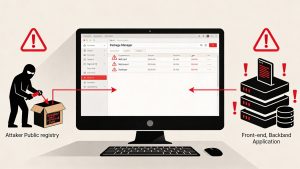In the realm of API security, Unrestricted Resource Consumption stands as a significant vulnerability that demands attention. This article delves into the intricacies of this security risk, its potential consequences, and effective mitigation strategies.
Understanding Unrestricted Resource Consumption
Unrestricted Resource Consumption occurs when an API or endpoint lacks limitations on client requests or access to exposed resources. This vulnerability can lead to various issues, including:
- Denial of Service (DoS) attacks
- Escalating costs for third-party services
- Unauthorized data scraping
Identifying the Vulnerability
To illustrate the concept, consider a scenario where an API endpoint allows unlimited scanning of account numbers. This unrestricted access enables malicious actors to potentially retrieve sensitive data through rapid, successive API calls.
Implementing Protective Measures
Rate Limiting
One of the primary defenses against Unrestricted Resource Consumption is rate limiting. This technique restricts the number of API calls from a specific source within a given timeframe. When implemented effectively, rate limiting can significantly hinder unauthorized data access attempts.
Challenges of Rate Limiting
While rate limiting is a powerful tool, it’s not without its challenges:
- Finding the Right Balance: Overly strict limits may impede legitimate users, while loose restrictions may prove ineffective.
- Bulk Operations: Some APIs, particularly GraphQL endpoints, allow bulk operations in a single call, potentially circumventing traditional rate limiting measures.
The Swiss Cheese Model of Security
It’s crucial to understand that no single security measure guarantees complete protection. The Swiss cheese model illustrates this concept, emphasizing the importance of layered security measures.
Best Practices for API Security
To effectively mitigate Unrestricted Resource Consumption risks:
- Implement and fine-tune rate limiting
- Monitor API usage patterns
- Employ additional security layers
- Regularly audit and update security measures
Conclusion
Unrestricted Resource Consumption poses a significant threat to API security. By understanding its nature and implementing robust protective measures, organizations can significantly reduce their vulnerability to this and other API-related security risks.
Read more such articles from our Newsletter here.



